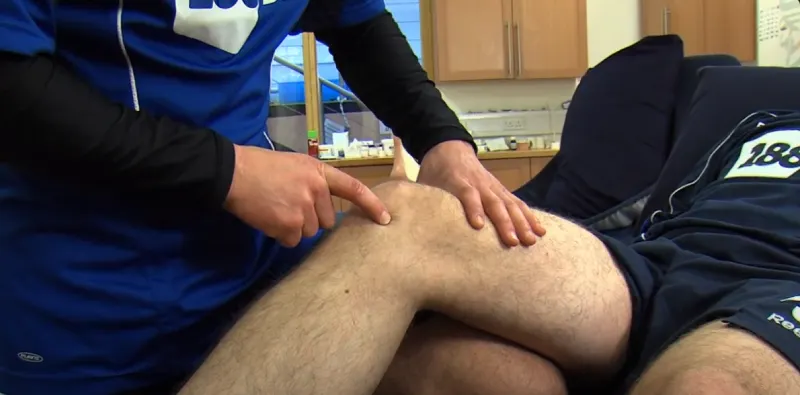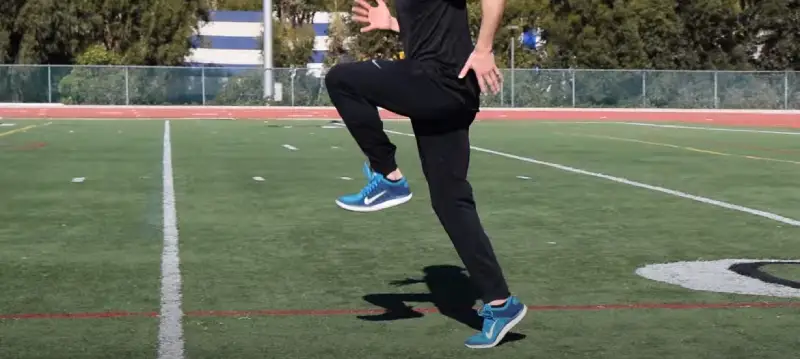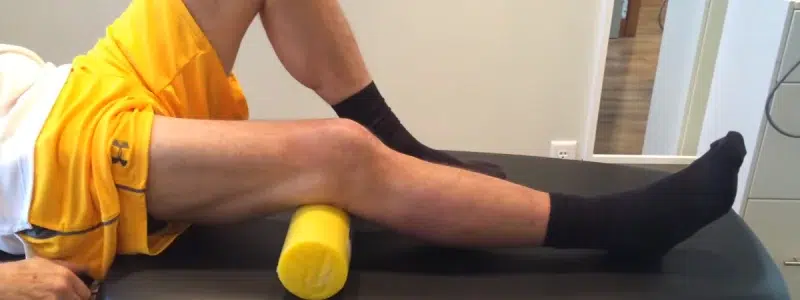Meniscus cartilage and articular cartilage protect and cushion the bones in the knee. Each bone’s end and the back of the kneecap are covered by articular cartilage. A smooth cartilage in the joint allows bones to slide over each other easily.
Yes, cycling is good for knee cartilage. Low-intensity cycling, in particular, is beneficial for individuals with knee osteoarthritis. Enhances aerobic fitness, reduces pain, and improves function.
In this article, we’ll explore the science behind knee cartilage, the benefits of cycling for joint health, and practical tips for cycling safely and effectively to preserve knee cartilage.
Is Cycling Good for Knee Cartilage: 5 Key Facts

Cycling has emerged as a promising exercise for promoting knee cartilage health, offering a non-weight-bearing alternative that significantly benefits joint well-being. Let’s delve into the science-backed advantages and explore how this low-affected activity can play a crucial role in preserving knee cartilage.
Benefits of Non-Weight-Bearing Activity for Knee Cartilage
Non-weight-bearing activities like cycling can help maintain healthy knee cartilage. Explore the science behind reduced knee joint stress and the advantages of low-impact cycling on joints and cartilage.
Reducing Knee Joint Stress with Science
- Elaborating on the mechanics: How cycling minimizes the impact on the knee joint.
- Scientific insights: Exploring studies on reduced stress and strain during non-weight-bearing activities.
Cycles with Low Impact on Joints & Cartilage
- Gentle yet effective: Cycling allows exercise without subjecting the knees to excessive pressure.
- Cartilage-friendly motion: Analyzing the biomechanics that make cycling an ideal choice for joint health.
Controlling Intensity and Resistance of Exercise to Prevent Injury
The best way to prevent exercise injuries is to control intensity and resistance and wear the right gear. Learn how to stay active without overexerting yourself.
Importance of Proper Gear and Resistance Levels
- Gear matters: Choosing the right equipment for optimal knee protection.
- Resistance as a safeguard: Understanding the role of opposition in preventing overexertion.
Exercising and Staying Active Without Overexertion
- Finding the balance: Tips for maintaining a steady exercise routine without risking knee strain.
- Listening to your body: Recognizing and respecting your physical limits is essential.
Low-Impact Exercise for Knee Cartilage Preservation
Cycles are low-impact exercises that preserve knee cartilage. From its versatility in routines to its smooth rides for healthy knees, cycling offers a standout workout option with little impact on the knees.
Cycling as a Great Option for a Low-Impact Workout
- Why cycling shines: Highlighting the unique characteristics that make it a standout low-impact exercise.
- Versatility in routines: How cycling can be adapted to suit various fitness levels and preferences.
Minimal Jolts and Jerks on the Knee. Joint
- Smooth rides for healthy knees: Explaining how cycling minimizes jarring movements.
- Comparing impacts: Contrasting the jolts experienced in other exercises with the smooth cycling flow.
Cycling’s Positive Impact on Knee Health in Different Situations
Cycling can be beneficial for knee health in various situations. Here are some Knee health benefits of cycling in different situations:
Bad Knees
Cycling is an excellent, low-affected exercise option for maintaining healthy knee cartilage. It helps improve function, reduce pain, and enhance fitness. Proper gear, resistance control, and warming up are essential for knee protection.
Knee Pain
Low-intensity cycling is an excellent workout option for people with knee osteoarthritis. It improves function and gait, reduces pain, and enhances aerobic fitness. Cycling is a low-affected exercise that preserves knee cartilage.
Arthritic Knees
Cycling is a good activity for people with arthritis, especially knee osteoarthritis since it is very gentle on their joints. You can do it outside, at a gym, or at home. Cycling maintains knee mobility and minimizes pain.
Knee Rehab
Cycling can help in knee rehab by improving circulation. Try cycling with little to no resistance for five to ten minutes. You must accumulate time and resistance until you can do 20 to 30 minutes without experiencing pain. If you are experiencing pain while cycling, rest your knee.
Cycling is Suitable for Knee Cartilage: Practical Tips

To make the most of your cycling routine while preserving your knee cartilage health, we have compiled some practical tips you can implement today.
Warming Up: A Vital Step for Knee Cartilage Protection
Before you start cycling, it’s essential to warm up to protect your knees. Here are some practical warm-up exercises that you can try:
- Leg swings.
- Hamstring stretch.
- High knee walks.
- Hip circles.
Bike Position and Comfort
The type of bike chosen and the positioning technique employed play crucial roles in finding the most suitable bike for arthritic knees.
- Bike size and style.
- Saddle height and angle.
- Handlebar height and width.
- Cleat adjustments (if using clipless pedals).
A Joint Health Protective Approach
High-impact activities and rough terrain can cause significant stress on your knees, leading to cartilage damage. Here are some things to avoid:
- Mountain biking on rugged trails.
- Jumping or performing tricks.
- Cycling on uneven surfaces.
Wear Protective Gear for Joint Health and Safety
Protective gear can be crucial to reducing the likelihood of injuries and preserving your knee cartilage. Here are some items to consider:
- Knee pads.
- Elbow pads.
- Gloves with grip.
- Helmet.
Stretching and Cooling Down: Essential for Joint Relaxation

After cycling, cooling down, relaxing your joints, and preventing soreness are essential. Here are some beneficial cool-down exercises:
- Slow pedaling.
- Leg extension stretch.
- Quad stretch.
- Hip flexor stretch.
Conclusion
Cycling can be an effective way to maintain and even improve your knee cartilage health. As a non-weight-bearing activity, cycling puts minimal stress on your knee joints while promoting cardiovascular fitness, muscle strength, and joint flexibility.
Following the practical tips discussed in this article, such as proper warm-up and cool-down exercises and choosing the right gear and resistance levels, you can enjoy cycling without risking knee cartilage injury.
To explore the topic further, consult your healthcare provider, a sports medicine specialist, or a certified cycling instructor for more comprehensive advice.
FAQs
Is Stationary Bike Good For Arthritic Knees?
Exercise with stationary bicycles relieves joint pain and improves sports performance in individuals with knee osteoarthritis. Still, it may not be as clinically effective for reducing stiffness, daily activity, and quality of life.
Is Walking Or Biking Better For Knees?
Biking may have a lower impact and strain on your knees than walking, even though both are low-affected exercises. A bike seat supports the weight of your legs, reducing the impact on your knees even more. However, a proper bike fit and technique are crucial to prevent knee strain.
Is It Possible to Cycle with Damaged Knee Cartilage?
Cycling is an excellent option for people with knee injuries. It enables slow, controlled movements that target multiple leg muscles. You can work your knees from various angles with each stroke, promoting rehabilitation and strengthening.
Does Cycling Help Torn Cartilage?
Stretching and strengthening the thigh and leg muscles can help restore knee mobility. Low-impact exercises like stationary biking may reduce pain and improve function around a meniscus tear.


